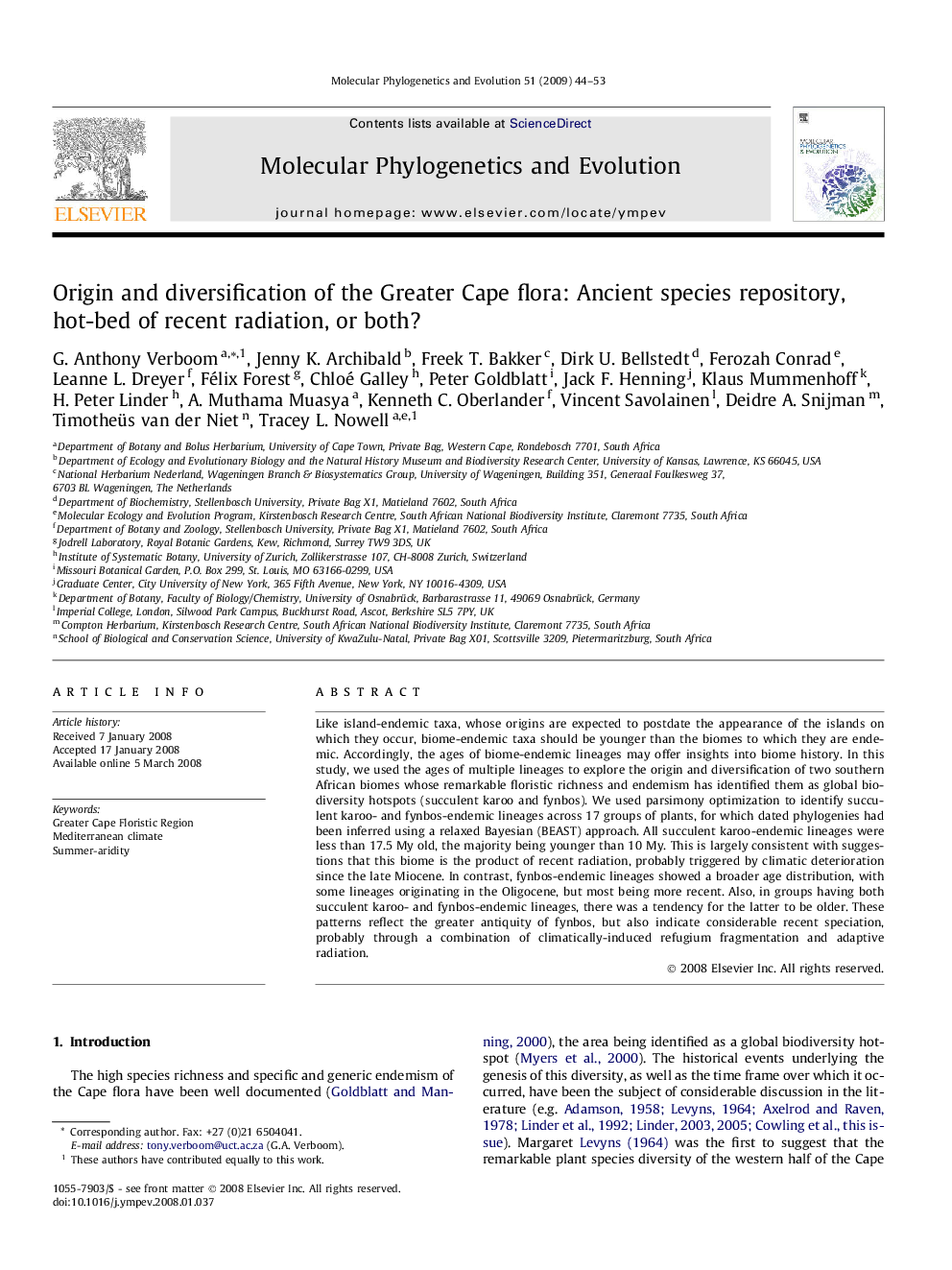| Article ID | Journal | Published Year | Pages | File Type |
|---|---|---|---|---|
| 2834931 | Molecular Phylogenetics and Evolution | 2009 | 10 Pages |
Like island-endemic taxa, whose origins are expected to postdate the appearance of the islands on which they occur, biome-endemic taxa should be younger than the biomes to which they are endemic. Accordingly, the ages of biome-endemic lineages may offer insights into biome history. In this study, we used the ages of multiple lineages to explore the origin and diversification of two southern African biomes whose remarkable floristic richness and endemism has identified them as global biodiversity hotspots (succulent karoo and fynbos). We used parsimony optimization to identify succulent karoo- and fynbos-endemic lineages across 17 groups of plants, for which dated phylogenies had been inferred using a relaxed Bayesian (BEAST) approach. All succulent karoo-endemic lineages were less than 17.5 My old, the majority being younger than 10 My. This is largely consistent with suggestions that this biome is the product of recent radiation, probably triggered by climatic deterioration since the late Miocene. In contrast, fynbos-endemic lineages showed a broader age distribution, with some lineages originating in the Oligocene, but most being more recent. Also, in groups having both succulent karoo- and fynbos-endemic lineages, there was a tendency for the latter to be older. These patterns reflect the greater antiquity of fynbos, but also indicate considerable recent speciation, probably through a combination of climatically-induced refugium fragmentation and adaptive radiation.
